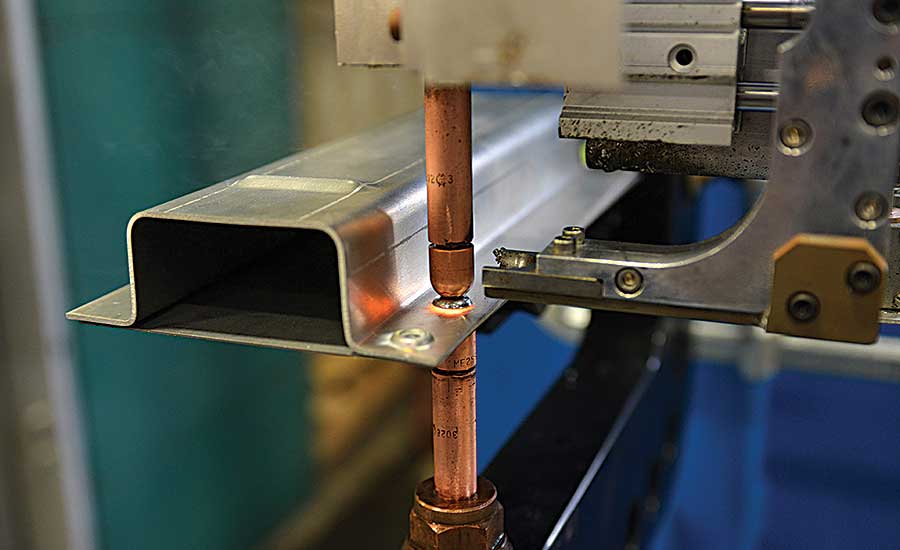A general rule is that the rivet should have a diameter of at least three times the thickness of the thickest sheet that is being joined.
Rivet sheet metal thickness.
The low carbon steel plate is 0 8 5 mm.
Wide thickness range domed head blind rivets.
Sheet metal usually refers to a thin metal plate with a thickness of 6 mm or less.
According to the sheet metal handbook the length of a rivet is measured from the underside of the head to the tip of the stem.
Rivets most commonly chosen in the assembly and repair of aircraft range from 3 32 inch to 3 8 inch in diameter.
According to the military standard so the bucked counter head diameter of the rivet joint must be larger than 1 4 times the diameter of the shank.
Measure the total thickness of the materials to be joined.
The height must extend to 0 3 times the diameter of the shank.
The aluminum alloy plate and the copper plate are 0 8 0mm.
Use the table below to determine the length of the blind rivet.
The head itself is not included in this measurement.
Remember that insufficient rivet length will not allow proper formation of the secondary head at the back of the work.
The recommended sheet thickness for cnc punching is.
Two piece press fit rivets for leather and fabric.
When the present thickness is lower than that you may want to use countersunk rivets with a low head or apply dimpling like zapster already mentioned.
Therefore the sheet metal parts with the rivet nut column and the rivet nut are not as stainless steel as possible.
Select black or white to make your rivets stand out or blend in.
The greater the diameter of the blind rivet the stronger the join.
When you know the height of the rivethead you know the minimum thickness.
Before driving any rivets into the sheet metal parts be sure all holes line up perfectly.
Known as peel style rivets the body splits into four legs to fasten plastic and fiberglass to thin material such as sheet metal.
This determines the required grip of the rivet you select.
Sheet metal fabrication is a cold processing process which is commonly used for punching bending.
As a general rule the rivet diameter should be at least two and a half to three times the thickness of the thicker sheet.
The length of the rivet should be equal to the thickness of both objects you are fastening plus 1 5 times the diameter of the rivet s stem.
If you are going to join two metal plates with a grip of 13 mm and want to use a 4 8 mm diameter blank rivet the rivet must be 18 mm long.
Following the example previously a material thickness of 0 30 inches falls comfortably within the 0 251 0 375 inch grip range of our chosen pop rivet.
And the rivet gun is used to pull the rivet to expand and deform the outer rivet sleeve thereby fixing the two parts.

